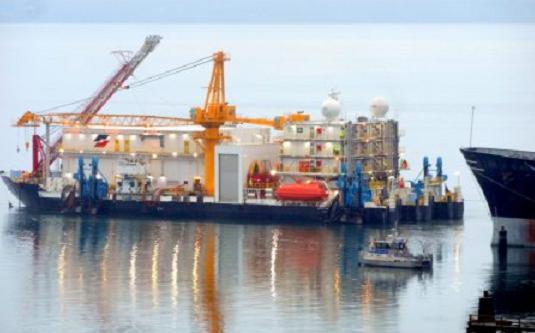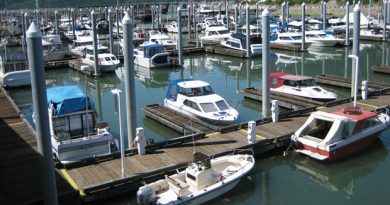Will Shell Oil’s Arctic ‘beer can’ hold up better in second-chance containment trial?
 The containment dome Royal Dutch Shell hopes never to use has been transformed, following an accident this September that left it “crushed like a beer can” — hampering the company’s groundbreaking effort to suck oil from the Arctic Ocean off Alaska’s North Slope.
The containment dome Royal Dutch Shell hopes never to use has been transformed, following an accident this September that left it “crushed like a beer can” — hampering the company’s groundbreaking effort to suck oil from the Arctic Ocean off Alaska’s North Slope.
The failed Puget Sound sea trial for the unique dome, essentially an undersea oil-sucking vacuum cleaner, plus construction delays on the Arctic Challenger barge that will house it, stymied Shell’s plans this summer to drill deep enough to reach oil this summer.
The problems delayed federal regulatory approval, so Shell was merely allowed to conduct well preparation and preliminary drilling that stopped nearly a mile short of where the company expects to find oil.
Shell overhauled the barge this year — it once sat so long it became a protected bird rookery in California — in a round-the-clock effort involving massive amounts of steel and a continuous flow of workers, said Todd Guiton, an interested observer who has photographed the project from his hillside condo in Bellingham, Wash.
Built in the 1970s to help open the nation’s largest oil field at Prudhoe Bay, the old barge is now a mobile production facility that can process oil, water and gas slurped up by the containment dome. But the barge didn’t win Coast Guard certification or classification by the American Bureau of Shipping until October, long after Shell had originally planned to deploy it.
As for the containment dome, it failed miserably in the test observed by federal regulators in September, after an electrical problem forced open a valve and caused a rapid descent, leading to the crumpling of the dome’s upper half.
Since the accident, Shell’s contractors have labored feverishly to get the dome ready for another deployment, said Guiton. He called the Arctic Containment System, as Shell calls its beefed-up barge and dome, a “magnificent piece of engineering work.”
On Wednesday, the barge and dome left the Port of Bellingham under the power of tugs Arctic Titan and Garth Foss, Guiton said. According to workers he’s met, the Arctic Containment System is headed for sea trials in Puget Sound that will be viewed by company officials.
Shell had suggested building the dome for use in a worst-case scenario as a fourth line of defense to be employed if other efforts, such as a blowout preventer to seal off a well, fail. The dome could be lowered over an undersea gusher and vacuum up spewing hydrocarbon, with hoses directing the oil, gas and water to the Arctic Challenger for processing.
The Bureau of Safety and Environmental Enforcement (BSEE) doesn’t have officials aboard the barge, said Nicholas Pardi, a spokesman with the agency, on Thursday. But they are prepared to watch tests when Shell is ready. The bureau must give the dome a thumbs-up before the oil giant can drill into the oil-bearing zones, Pardi said.
“It is not a permit (Shell needs), but rather is best described as this: BSEE engineers have been on the Arctic Challenger and overseen tests of the industrial equipment and a deployment test that still needs to be completed before it receives final approval,” Pardi said. “That approval will not be granted until that test is completed to our satisfaction.”
Curtis Smith, Shell’s Alaska spokesman, did not answer questions seeking details about the dome, including how much Shell has spent on it and how it has been strengthened. From Guiton’s photos, it’s clear the upper part that was crushed has been significantly reinforced, with lateral ribs and an outer frame, as Guiton calls those improvements.
Smith earlier said the dome will be deployed “for regulators in the weeks to come and we look forward to having it in Alaska in 2013.”
Contact Alex DeMarban at alex(at)alaskadispatch.com
For more stories from Alaska Dispatch, click here



